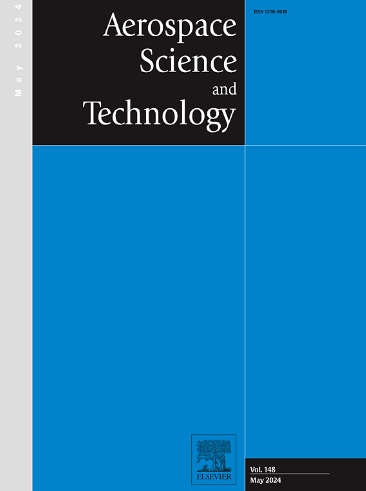Prediction of aerodynamic coefficients for multi-swept delta wings via a hybrid neural network
IF 5
1区 工程技术
Q1 ENGINEERING, AEROSPACE
引用次数: 0
Abstract
This study investigates the prediction capabilities of a hybrid neural network model for the aerodynamic coefficients of multiple swept delta wings, focusing on rapidly estimating coefficient slopes and aerodynamic characteristics. By leveraging a machine learning approach combining image classification and conventional feed-forward neural networks, the study aims to provide an efficient alternative to resource-intensive computational fluid dynamics simulations or wind tunnel experiments during the early design phases of aircraft. The training dataset is derived from existing wind tunnel measurements of multiple swept delta wing configurations with varying leading-edge sweeps, incorporating both baseline configurations and scenarios with deflected control surfaces and applied sideslip angles. Parameters such as Mach number, Reynolds number, aspect ratio, angle of attack, angle of sideslip, and control surface deflections are considered additional input variables, representing a comprehensive range of flow conditions encountered in practical aerodynamic analyses. The findings demonstrate that the proposed hybrid neural network effectively predicts aerodynamic coefficients with high accuracy in forecasting lift coefficients and their derivatives. While the model exhibits excellent predictive performance for the trends in coefficient slopes, it shows limitations in accurately predicting the absolute values of pitching moment coefficients. Overall, the results underscore the potential of machine learning techniques for rapidly evaluating aerodynamic characteristics and slope trends, offering significant time and cost savings in preliminary aircraft design.
通过混合神经网络预测多掠三角翼的气动系数
本研究调查了混合神经网络模型对多折翼机翼气动系数的预测能力,重点是快速估计系数斜率和气动特性。该研究利用图像分类与传统前馈神经网络相结合的机器学习方法,旨在为飞机早期设计阶段的资源密集型计算流体动力学模拟或风洞实验提供有效的替代方案。训练数据集来自现有的风洞测量数据,这些数据是对具有不同前缘后掠角的多种三角翼配置进行的测量,其中包括基线配置和具有偏转控制面和应用侧倾角的场景。马赫数、雷诺数、长宽比、攻角、侧倾角和控制面偏转等参数被视为附加输入变量,代表了实际空气动力学分析中遇到的各种流动条件。研究结果表明,所提出的混合神经网络能有效预测空气动力系数,并能高精度地预测升力系数及其导数。虽然该模型在预测系数斜率趋势方面表现出色,但在准确预测俯仰力矩系数的绝对值方面存在局限性。总之,研究结果凸显了机器学习技术在快速评估气动特性和斜率趋势方面的潜力,为飞机初步设计节省了大量时间和成本。
本文章由计算机程序翻译,如有差异,请以英文原文为准。
求助全文
约1分钟内获得全文
求助全文
来源期刊

Aerospace Science and Technology
工程技术-工程:宇航
CiteScore
10.30
自引率
28.60%
发文量
654
审稿时长
54 days
期刊介绍:
Aerospace Science and Technology publishes articles of outstanding scientific quality. Each article is reviewed by two referees. The journal welcomes papers from a wide range of countries. This journal publishes original papers, review articles and short communications related to all fields of aerospace research, fundamental and applied, potential applications of which are clearly related to:
• The design and the manufacture of aircraft, helicopters, missiles, launchers and satellites
• The control of their environment
• The study of various systems they are involved in, as supports or as targets.
Authors are invited to submit papers on new advances in the following topics to aerospace applications:
• Fluid dynamics
• Energetics and propulsion
• Materials and structures
• Flight mechanics
• Navigation, guidance and control
• Acoustics
• Optics
• Electromagnetism and radar
• Signal and image processing
• Information processing
• Data fusion
• Decision aid
• Human behaviour
• Robotics and intelligent systems
• Complex system engineering.
Etc.
 求助内容:
求助内容: 应助结果提醒方式:
应助结果提醒方式:


